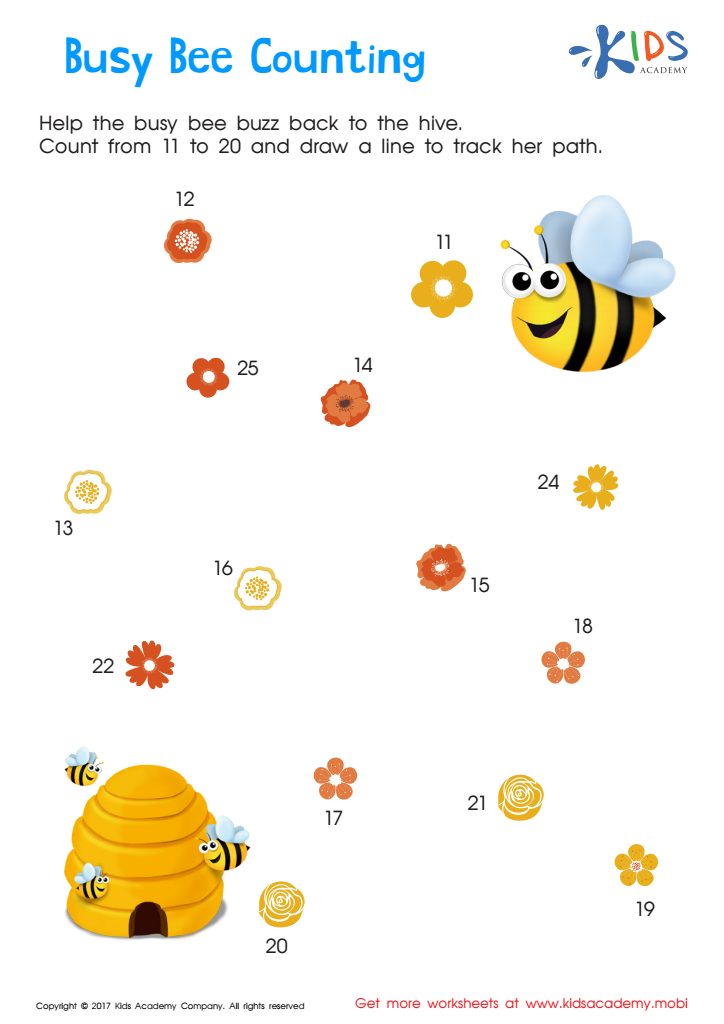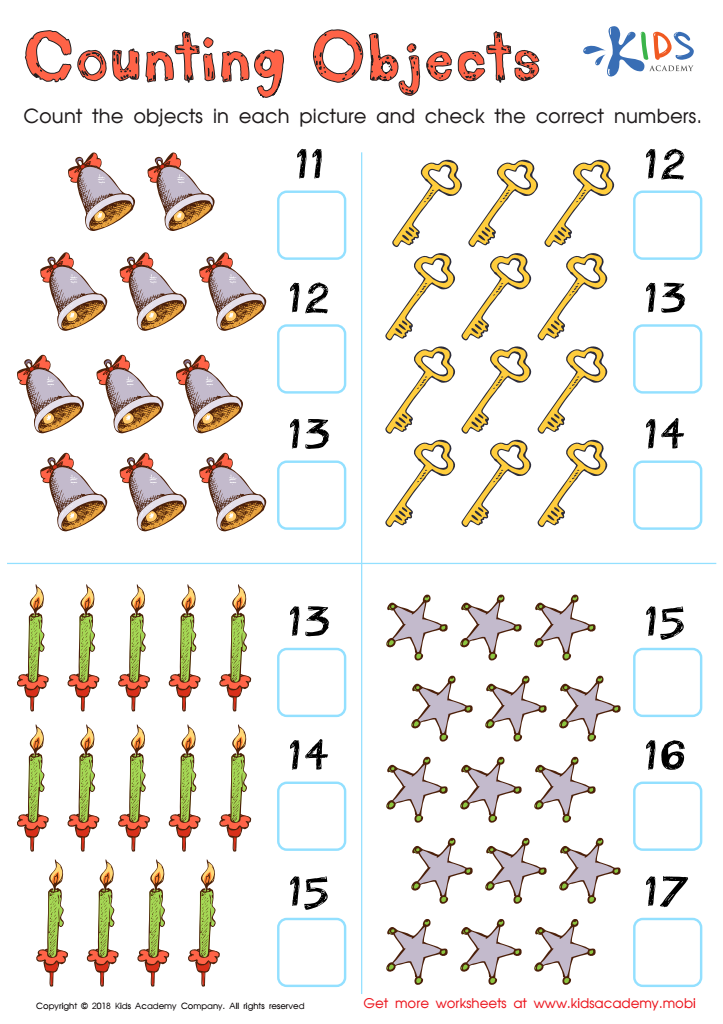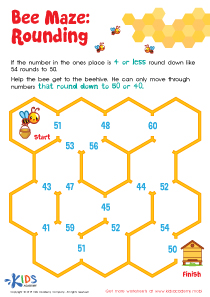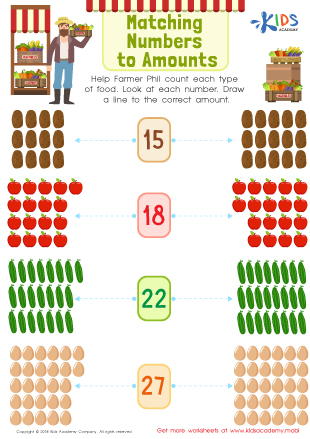Counting practice Numbers 11–20 Worksheets for Ages 4-5
4 filtered results
-
From - To
Introducing our engaging "Counting Practice Numbers 11–20 Worksheets" designed exclusively for children ages 4-5! These printable worksheets are perfect for developing early math skills while making learning fun and interactive. Each worksheet features colorful illustrations and activities that help young learners confidently count, recognize, and write numbers from 11 to 20. With a variety of exercises, including tracing numbers and counting objects, these resources ensure a comprehensive counting practice experience. Ideal for both classroom and at-home learning, our worksheets offer a solid foundation in numeracy, preparing children for future math success. Boost your child's counting prowess today!


Ordering 11–20: Busy Bee Counting Worksheet


Counting Numbers Worksheet For Kindergarten


Ordering 11–20: Chicken & Egg Dot–to–dot Worksheet


Counting with Base Ten Blocks Worksheet
Counting practice for numbers 11-20 is vital for children ages 4-5, forming a foundation for their future mathematical development. At this stage, children typically grasp the basics of counting to ten, but extending this to higher numbers builds their understanding of sequence, quantity, and number relationships.
First, practicing numbers 11-20 enhances cognitive skills. It requires memorization, pattern recognition, and the grasping of what each number represents. As children become comfortable with these numbers, they start to understand more complex concepts such as place value, which is the basis for addition and subtraction.
Second, it prepares them for real-life problem-solving. Numbers 11-20 appear frequently in everyday scenarios, like counting objects, understanding days in a calendar, or during simple transactions. Early familiarity with these numbers enables children to navigate such situations more comfortably.
Socially, sharing counting activities fosters collaborative skills. Whether through games or group lessons, children learn to work with peers, developing critical communication skills.
Lastly, regular counting practice boosts confidence. Mastering a new set of numbers provides a sense of achievement, promoting a positive attitude toward learning and challenges. Therefore, parents and teachers should incorporate these practices into daily routines, ensuring young learners are well-prepared for more advanced mathematical concepts and everyday applications.
 Assign to My Students
Assign to My Students















